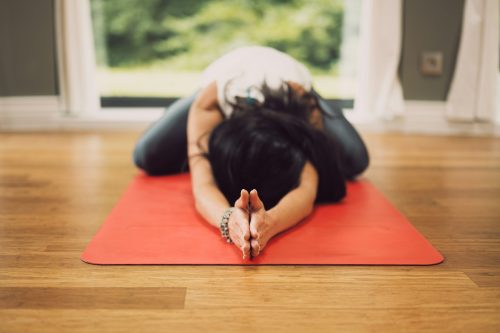You have probably already tried several approaches to relieve your back pain: rest, physiotherapy, osteopathic treatment, medication, ultrasound… However, your pain persists. Perhaps you have heard of the Mckenzie method and are wondering if it could be effective in your case?
My name is Anas, I am a physiotherapist specializing in the Mckenzie method. With more than 13 years of experience and more than 120 hours of training, I apply this method to my patients with encouraging results. In this article, I will explain in detail what the Mckenzie method is and how it can help you relieve your back and sciatica pain.
What is the Mckenzie Method? ?
The McKenzie Method, founded by Robin McKenzie, is based on the idea that certain specific movement directions can relieve back pain and even eliminate it. The story that marked the beginning of this method is that of a patient who, by chance, found himself in a position oflumbar extension on a tilted examination table.
Against all odds, this position made his leg pain disappear, leading Robin McKenzie to question conventional treatment methods, based solely on back flexion.
The principle of the Mckenzie method
The goal of the Mckenzie method is to find the preferred direction of movement here centralizes pain, that is to say which brings back the radiating pains (like the sciatica) towards the lower back.
According to scientific studies, centralization is a good prognostic sign, indicating a greater chance of recovery.
Preferred direction: Extension or flexion?
The Mckenzie method proposes to assess which direction of movement (primarily extension or flexion, although there are other alternatives) relieves symptoms.
Here are some typical characteristics of a preferential direction in extension and flexion. Again, there are exceptions, and each case must be evaluated individually:
Preferential direction in lumbar extension
- Pain worse when sitting prolonged or leaning forward.
- Pain relieved by walking or standing.
- Frequent diagnosis of herniated disc (L4-L5, L5-S1).
Preferential direction in lumbar flexion
- Pain worse when standing or while walking.
- Pain relieved by sitting or lying down leaning forward.
- Frequent diagnosis of narrow lumbar canal, lumbar arthritis or spondylolisthesis.
If you recognize yourself in any of these descriptions, it is likely that you respond better to one or the other of the positions.
Practical exercises according to the Mckenzie method
Exercise for a preferred direction in extension
This concerns several cases of herniated disc:
- Lie on your stomach.
- Lie on your elbows for 2 to 3 minutes to relax the lower back.
- Then push with your arms to lift your upper body, while keeping your pelvis on the ground and your legs relaxed.
- Climb up to tolerance, then slowly lower.
- Repeat the exercise 10 times, every 2 hours.
Exercise for a preferred direction in flexion
This concerns several cases of narrow lumbar canal, lumbar osteoarthritis, spondylolisthesis:
- Lie on your back.
- Bring your knees toward your chest, holding them with your arms for a stretch in your lower back.
- Hold the position for a few seconds, then release.
- Repeat the exercise 10 times, every 2 hours.
The Benefits of the Mckenzie Method
- Self-treatment : You can apply this method yourself without needing a therapist at each session.
- Simplicity and efficiency : Once the preferred direction is identified, the exercises are easy to perform and can quickly reduce pain.
- Prevention of recurrences : In addition to relieving current pain, the Mckenzie Method helps prevent future injuries.
However, this method must be practiced correctly and regularly. If your symptoms persist or worsen, it is essential to consult a Mckenzie specialist for more personalized treatment.
Conclusion
The Mckenzie Method offers a proactive, self-directed approach to treating back pain. By identifying your preferred direction of movement, you can not only relieve your symptoms, but also improve your back mobility and prevent future pain.
Try these exercises for a few days and assess your progress. If you see improvement, continue practicing regularly.
For further information: Free 21-day program against back pain
To help you resume physical activity safely, I invite you to try my 21 day program against back pain, 100% free.
👉 Sign up here for the 21 Day Back Pain Program
For a more comprehensive approach, discover Lombafit Studio, a platform dedicated to guided exercises to relieve and prevent back pain.
👉 Discover Lombafit Studio here
References
- May, S., & Aina, A. (2012). Centralization and Directional Preference: A Systematic Review. Manual Therapy, 17(6), 497-506. doi: 10.1016/j.math.2012.05.004
- Machado, LA, Maher, CG, Herbert, RD, Clare, H., & McAuley, JH (2006). The McKenzie Method for Low Back Pain: A Systematic Review of the Literature with a Meta-analysis Approach. spine, 31(9), E254-E262. doi: 10.1097/01.brs.0000214882.48635.a3
- Long, A., Donelson, R., & Fung, T. (2004). Does it Matter Which Exercise? A Randomized Control Trial of Exercise for Low Back Pain. spine, 29(23), 2593-2602. doi: 10.1097/01.brs.0000146903.24834.19
My name is Anas Boukas and I am a physiotherapist. My mission ? Helping people who are suffering before their pain worsens and becomes chronic. I am also of the opinion that an educated patient greatly increases their chances of recovery. This is why I created Healthforall Group, a network of medical sites, in association with several health professionals.
My journey:
Bachelor's and Master's degrees at the University of Montreal , Physiotherapist for CBI Health,
Physiotherapist for The International Physiotherapy Center


